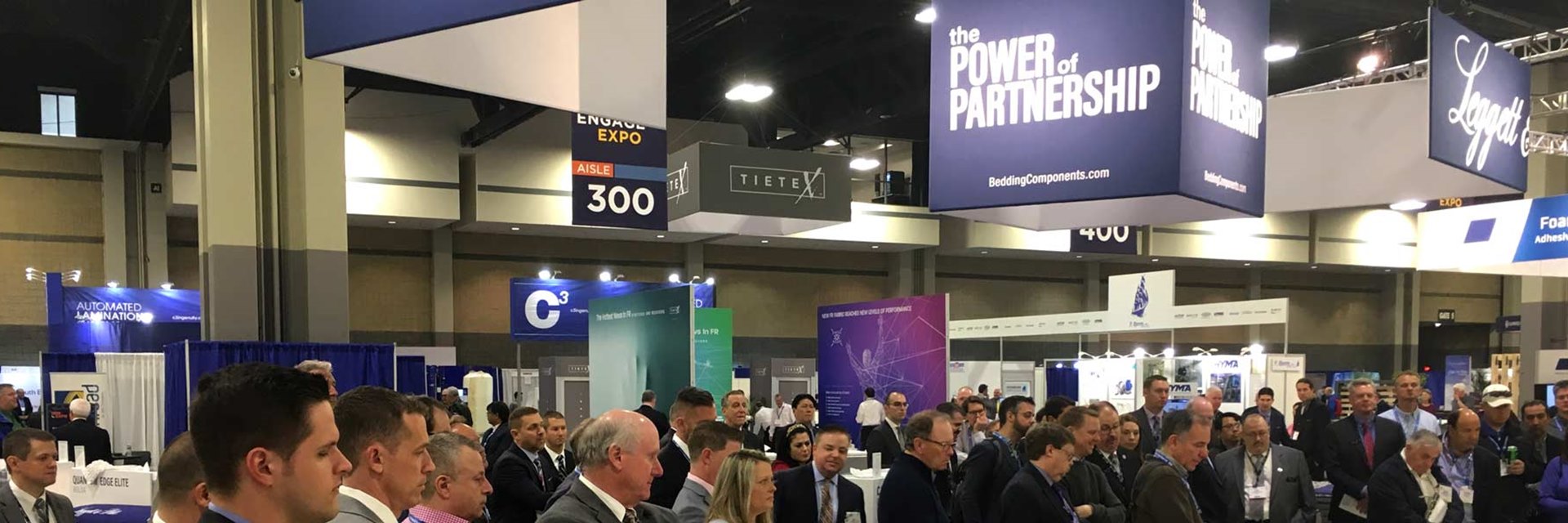Re-Slicing the Pie - Part 2

As discussed in Part 1
- Tradeshow management can be a little hairy at times.
- I don’t always practice what I preach.
- I’m not against eating a little humble pie to make a point.
Now, where were we?????
Ah, yes…the “how” part of developing a more targeted, less cluttered booth space. While I consider it fun, I’m fairly sure I’m in the minority.
As discussed in Part 1, the days of showing every product all the time in tradeshow booths have gone from being essential to being seriously annoying from the tradeshow attendee’s perspective. We have become a digital society accustomed to doing our research online. Often there is a huge disparity between the clean, functional design (decided upon at the beginning of booth development) and the reality of what is actually shown when it’s showtime.
As the exhibit manager for a large, international manufacturer, I face a constant challenge in helping our business units convey the essence of their product line without physically showing all their wares.
Why Are We Showing?
The simplest way to start planning for a valid, targeted booth presence is to ask the question, “Why?” Here’s a huge caveat: when sales reps (doubling as booth staffers) are asked, the answer generally ranges somewhere between an enthusiastic “new business!” to a mumbled “because we’ve always been there.” Don’t be deterred by that initial response! Taking the time to drill down further is key to having a good, targeted space.
Scenario 1:
- The “why”: To try and write as many orders as possible on a strict schedule
- The focus: Focusing on the functionality and flow of the booth space is paramount to ambiance. Stations created for the specific purpose of efficient meetings with obvious, limited messaging is a start. To assist flow, the actual number of stations and amount of staffers needed to smoothly move traffic through the space are other crucial factors. Both the attendees and exhibitors have the expectation of a quick interaction with an action item as the finale. The attendee would likely be impatient with some long, sit-down run-through of the theory behind the line. This creates a loss of interest if the sales rep tried to “wine and dine” them.
Scenario 2:
- The “why”: To build and reinforce relationships with our customers to earn future orders and stay relevant
- The focus: Unlike the first scenario, if the show is a relationship-building show, it may be important to focus heavily on a relaxed ambiance in a nice hospitality area with memorable catering. This is especially true in the European market, where the discussion of the specifics of a sale may never come up during an at-show meeting. Attendees often feel that exhibitors who don’t respect the relationship-building portion of the sales cycle are brash and disrespectful. To set up the previously mentioned sales stations in a booth where attendees are expecting to receive low-pressure attention is a big faux pas in the tradeshow world – and is likely to be reflected in a lack of quality show leads.
The bottom line is that if you use the “why” as the basis to create the booth, it is much easier to narrow the focus to what you really want to accomplish. The booth becomes a precise tool to help realize your goals.
Just as significant, determining the “why” of your exhibit provides the foundation for the next step. Every stakeholder involved in a tradeshow has their own idea of what’s important. The exhibit manager’s job is to sort through the noise and help develop a plan that addresses the core target of the group. This exercise helps with the toughest question of all:
“What do we put in this booth?” And, just as important – How do those contents benefit the “why”?

